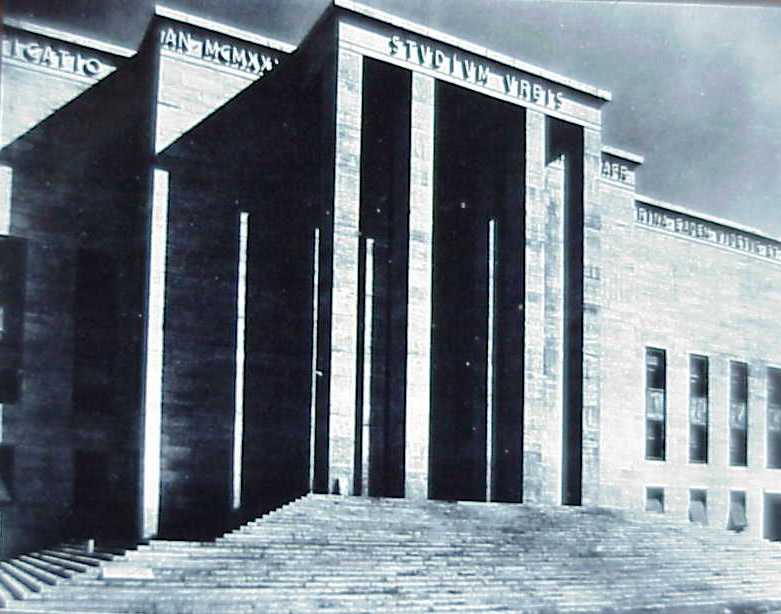| New York Architecture Images- notes |
| Fascist architecture in Italy |

|
| Neoclassical to Modern As a backlash against the excesses of the baroque and rococo, by the middle of the 18th century, Italian architects began turning to the austere simplicity and grandeur of the Classical Age and inaugurated the neoclassical style. Their work was inspired by the rediscovery of Pompeii and other ancient sites. From the 19th century through the 20th century, Italian architects constructed buildings in a variety of styles. Italy's take on the early-20th-century Art Nouveau movement was called Liberty style. Mussolini made a spirited attempt to bring back ancient Rome in what can only be called fascist architecture. Since then, Italy, like the rest of the world, has mostly erected concrete and glass skyscrapers. Some identifiable features for each of these movements include: Neoclassical. The classical ideals of mathematical proportion and symmetry, first rediscovered during the Renaissance, are the hallmark of every classically styled era. Neoclassicists reinterpreted ancient temples as buildings with massive colonnaded porticos. Liberty. Like Art Nouveau practitioners in other countries, Italian artists rebelled against the era of mass production and stressed the uniqueness of craft. They created asymmetrical, curvaceous designs based on organic inspiration (plants and flowers) and used such materials as wrought iron, stained glass, tile, and hand-painted wallpaper. Fascist. Deco meets Caesar. This period produced monumentally imposing and chillingly stark white marble structures surrounded by classical statuary. Of the neoclassical, the Vittorio Emanuele Monument, which has been compared to a wedding cake and a Victorian typewriter, was Italy's main monument to reaching its Risorgimento goal of a unified Italy. Liberty style never produced any surpassingly important buildings, although you can glimpse it occasionally in period storefronts. Fascist architecture still inhabits all corners of Rome (although most of the Right Wing reliefs and the repeated engravings of "DVCE" -- Mussolini's nickname for himself -- have long since been chipped out). You can see it at its best in Rome's planned satellite community called EUR (including a multistory "square Colosseum" so funky it has been featured in many films and music videos) and the Stadio Olimpico complex. The mid-20th century was dominated by Pier Luigi Nervi (1891-1979) and his reinforced concrete buildings, including the Palazzeto dello Sport stadium (1960). |